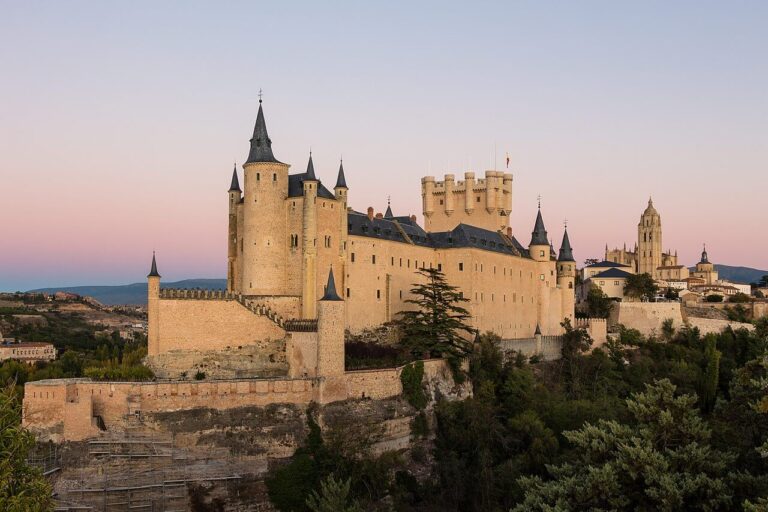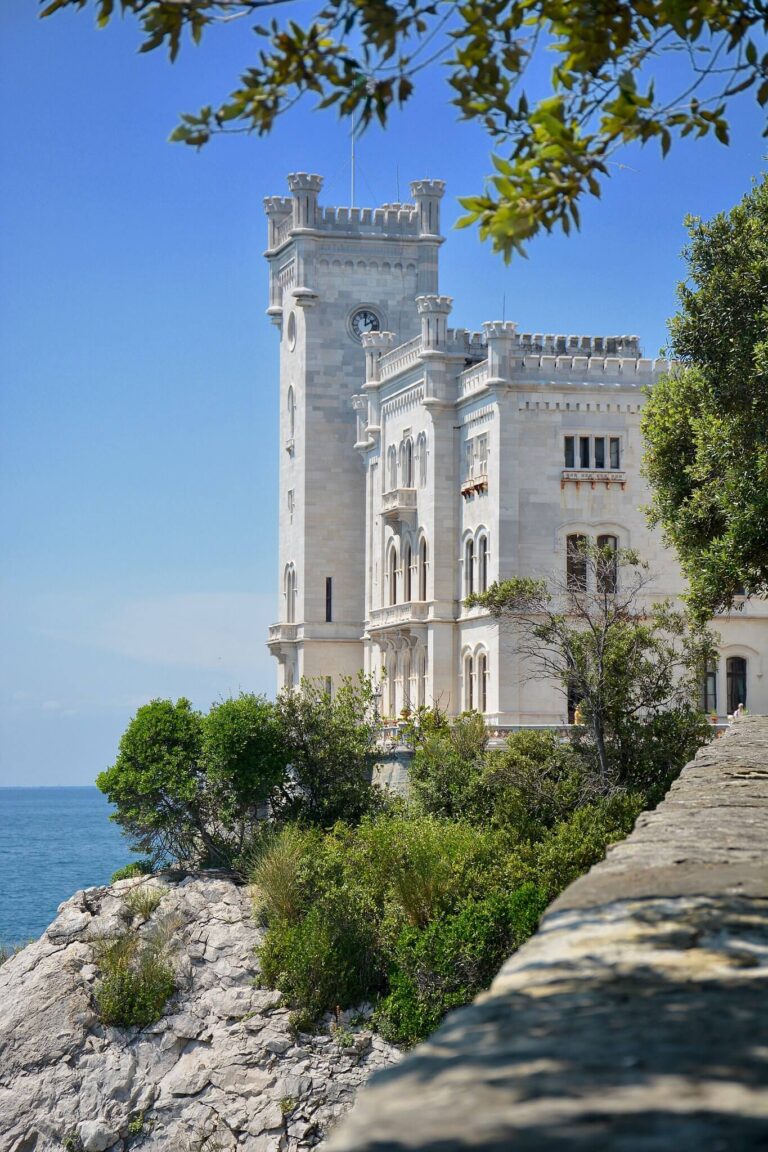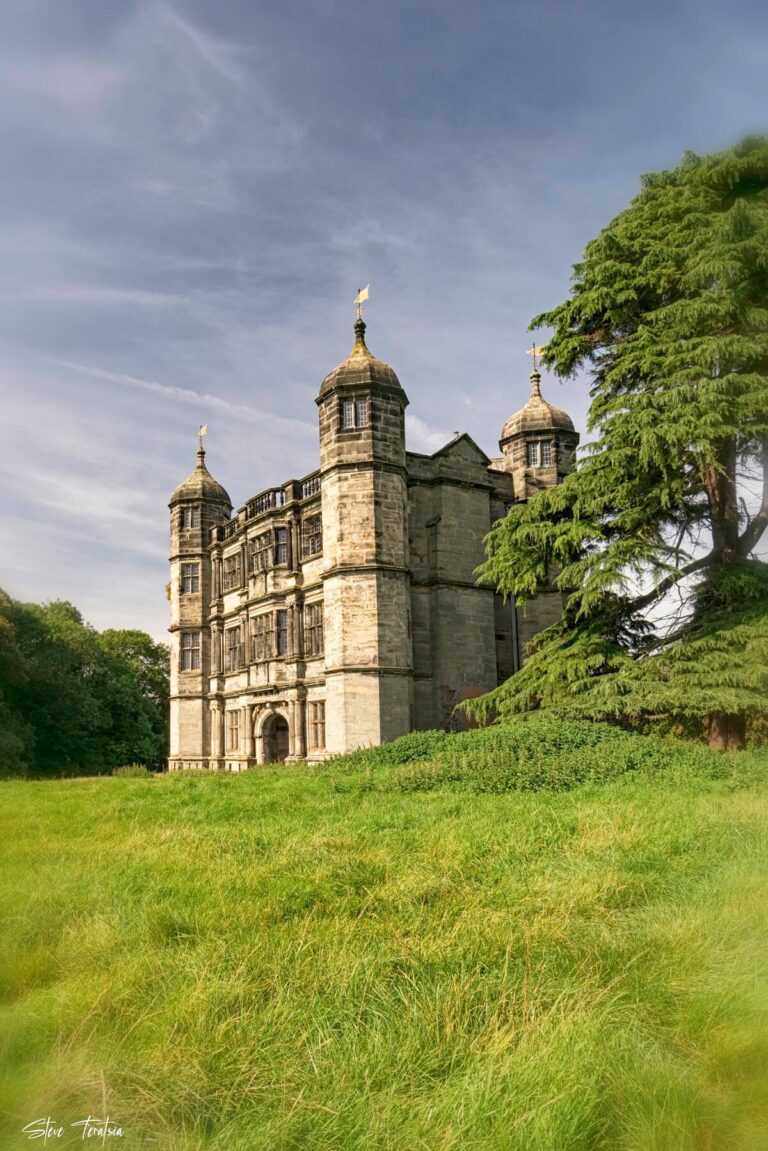These Lavish Palaces in Europe are UNESCO World Heritage Sites
Ever wondered which palaces in Europe are UNESCO World Heritage Site? We’ve got you covered. Many European countries have a long history of royal and noble houses that ruled the area or the entire country. The palaces in Europe ve many stories to tell from political tumult to the evolution of architectural styles in Europe.
Some palaces in Europe are chosen as UNESCO World Heritage Sites. These palaces play an important role in the cultural, historical, and political history of their country. In this post, you will find the UNESCO palaces in Europe divided by country. You will find palaces whose histories go back hundreds of years and by visiting these palaces you will step back in time and marvel a the stunning art, architecture, and interesting stories the palace has to tell.
UNESCO Palaces in Austria

Eggenberg Palace
Schloss Eggenberg is a Baroque place in Graz and one of the most valuable cultural treasures in Austria. Though the palace has a Baroque appearance, the origins of the palace actually date back to the late medieval period. In the 17th century, Prince Hans Ulrich von Eggenberg commissioned architect Giovanni Pietro de Pomis to build a new palace while also incorporating the medieval structure.
The State Rooms at Eggenberg Palace are largely unchanged since their construction. They have their original 17th and 18th century designs, furniture, tapestries, and decorations. The highlight of the State Rooms is the Planetary Room which features a cycle of paintings by court artist Hans Adam Weissenkircher. In total, there are 600 ceiling paintings in the state rooms showing scenes from Greek and Roman mythology, religious scenes, and historical legends.
Eggenberg Palace estate is also the home to three more museum: the Alte Galerie, a Coin Cabinet, and the Archaeology Museum.
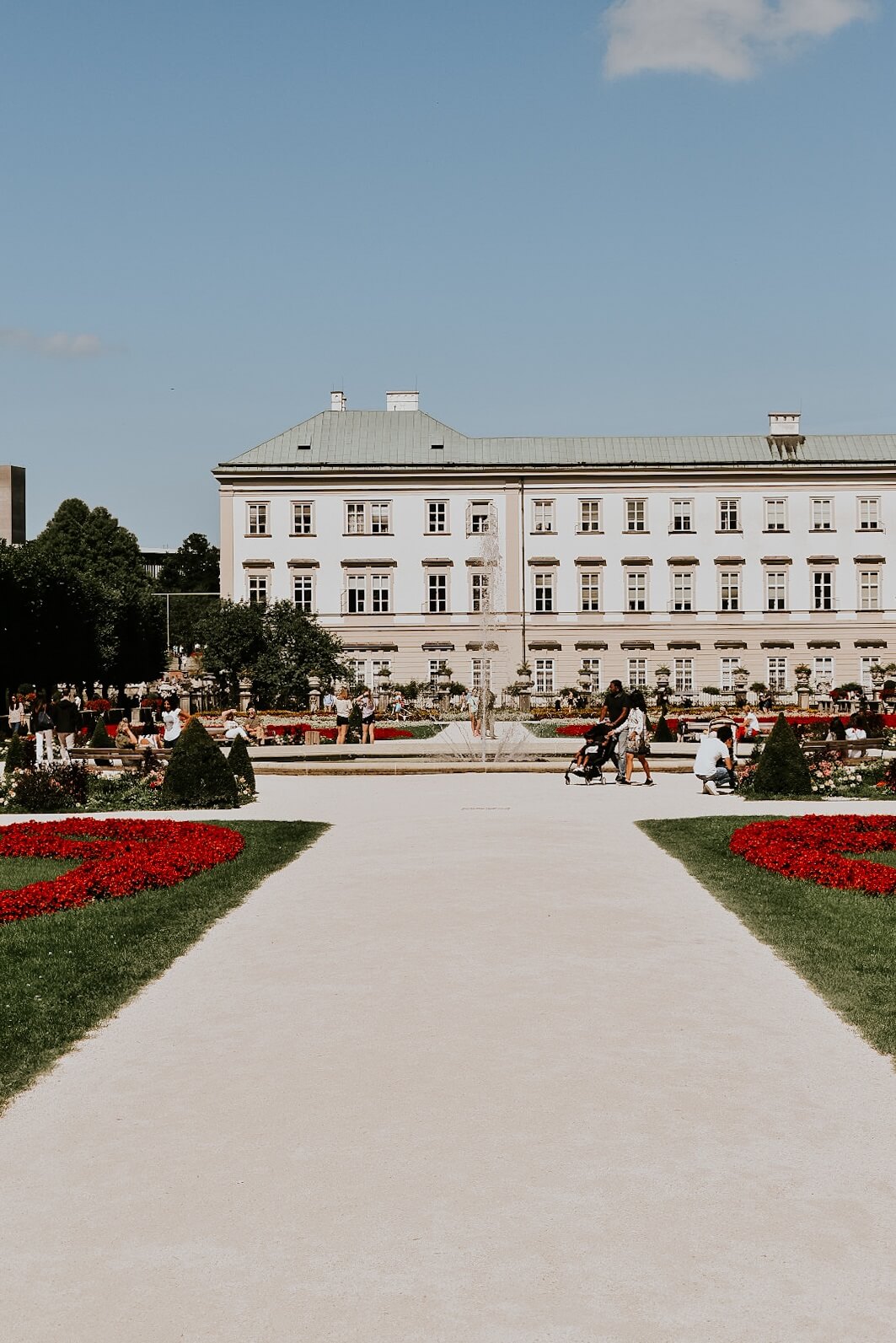
Mirabell Palace
The historic city center of Salzburg is a UNESCO World Heritage Site and in this historic center you will also find the Mirabell Palace. The palace was built in 1606 just north of the city’s medieval walls and on the shore of the river Salzach. The palace was built as a pleasure palace by Prince Archbishop Wolf Dietrich Raitenau for himself and his mistress Salome Alt.
Originally, the palace was called Schloss Atenau but when Mark Sittich von Hohnems moved into the palace he changed the name to Mirabell after the Italian words mirabile and bella that mean “amazing” and “wonderful”.
In 1818, the palace was transformed into a Neoclassical style. Mirabell Palace is also the birthplace of the later King Otto of Greece. His father, Ludwig I of Bavaria, was stadtholder of the Electorate of Salzburg at that time.
The Mirabell gardens were designed in the 18th-century and houses many statues inspired by Greek myths. The Palace and garden can also be seen in The Sound of Music.
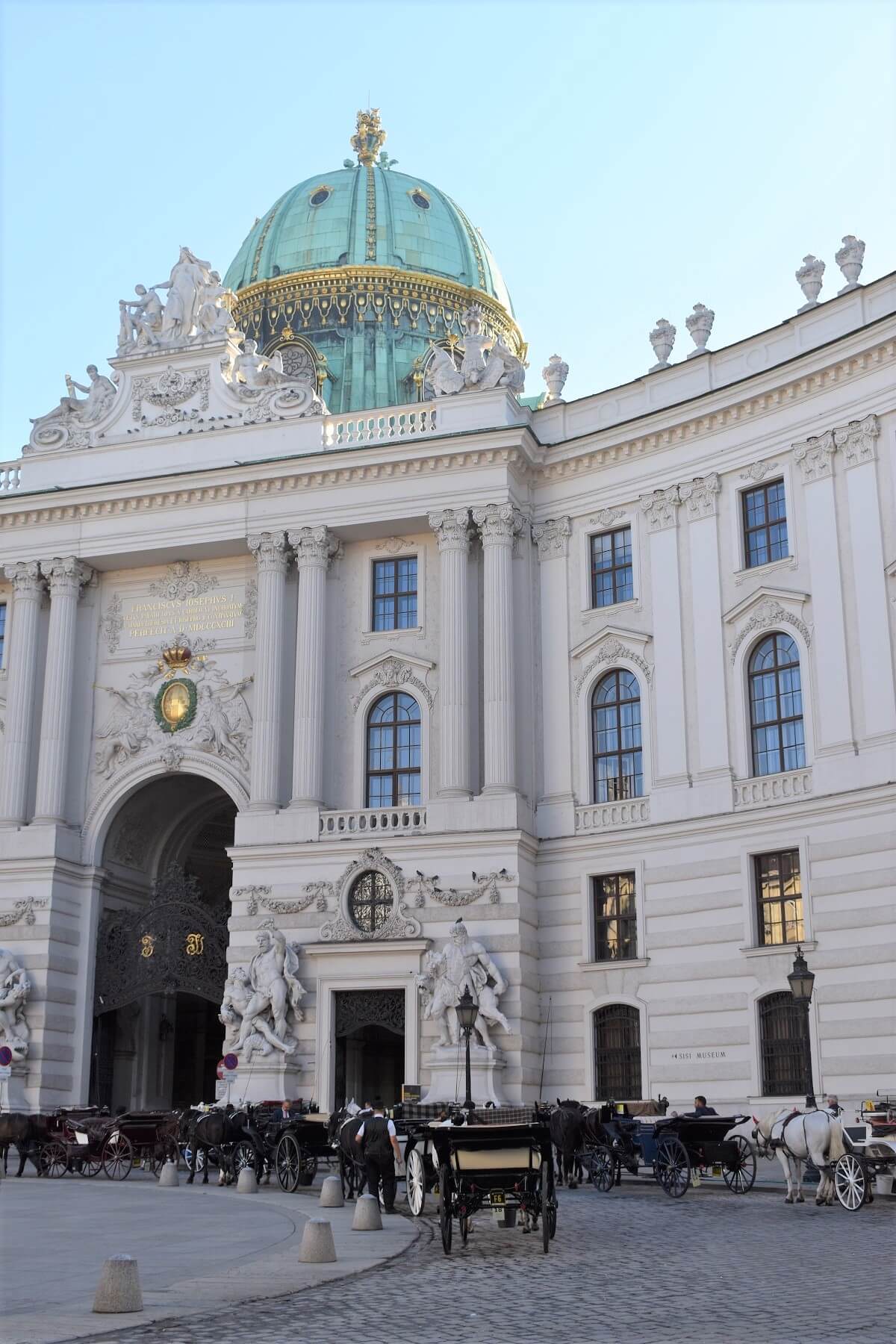
Hofburg Palace
The historic city center of Vienna, where the Hofburg Palace is located, is a UNESCO World Heritage Site. The Hofburg Palace served as the principal imperial palace of the Habsburg dynasty, as well as the family’s official winter residence. It has been the home of many famous nobles like Empress Theresa, Queen Marie Antoinette, and Kaiserin Sissi.
The palace construction started in the 13th century but has been extended multiple times over the centuries. It now spans a large part of the inner city of Vienna and it includes historic residences, including the apartments of Empress Elisabeth and Franz Joseph I, a chapel, the imperial library, the Burgtheater, and the Spanish Riding School. Many of these buildings can now be visited on a trip to Vienna.

Schönbrunn Palace
The official summer residence of the Habsburg dynasty, Schönbrunn Palace, is located just outside Vienna. The palace was built in the 17th century by Emperor Leopold I as a hunting lodge but during the reign of Maria Theresa the Rococo palace became the center of court life.
The grand Schönbrunn palace has 1441 of which 40 are now open to the public. These rooms include the private apartments of Emperor Franz Joseph and Elisabeth as well as rooms that were decorated during Maria Theresia’s reign.
The grounds of the Schönbrunn Palace include the formal gardens, a maze, the Gloriette, a palm house, and a zoo.
UNESCO Palaces in Azarbaijan

Palace of the Shirvanshahs
The Inner City of Baku is a UNESCO World Heritage Site and in this walled city you can find the Palace of the Shirvanshahs. The palace was built between the 12th- to 15th-century and it is located at the highest point of the Icherisheher.
The palace complex houses a Divankhana (reception hall) or, as some researchers believe, the Tomb of Shah, the residential building of Shirvanshahs, the remains of Key-Kubad Mosque, the Tomb of Seyid Yahya Bakuvi, Murad’s Gate (the only monument of the 16th century), the Tomb of Shirvanshahs’ Family, the Shah Mosque and the Palace bath-house.
Earlier monuments of Icherisheher include the Mohammed Mosque, together with the adjacent minaret built in 1078, and remains of the 9th- to 10th-century mosque near the Maiden Tower.
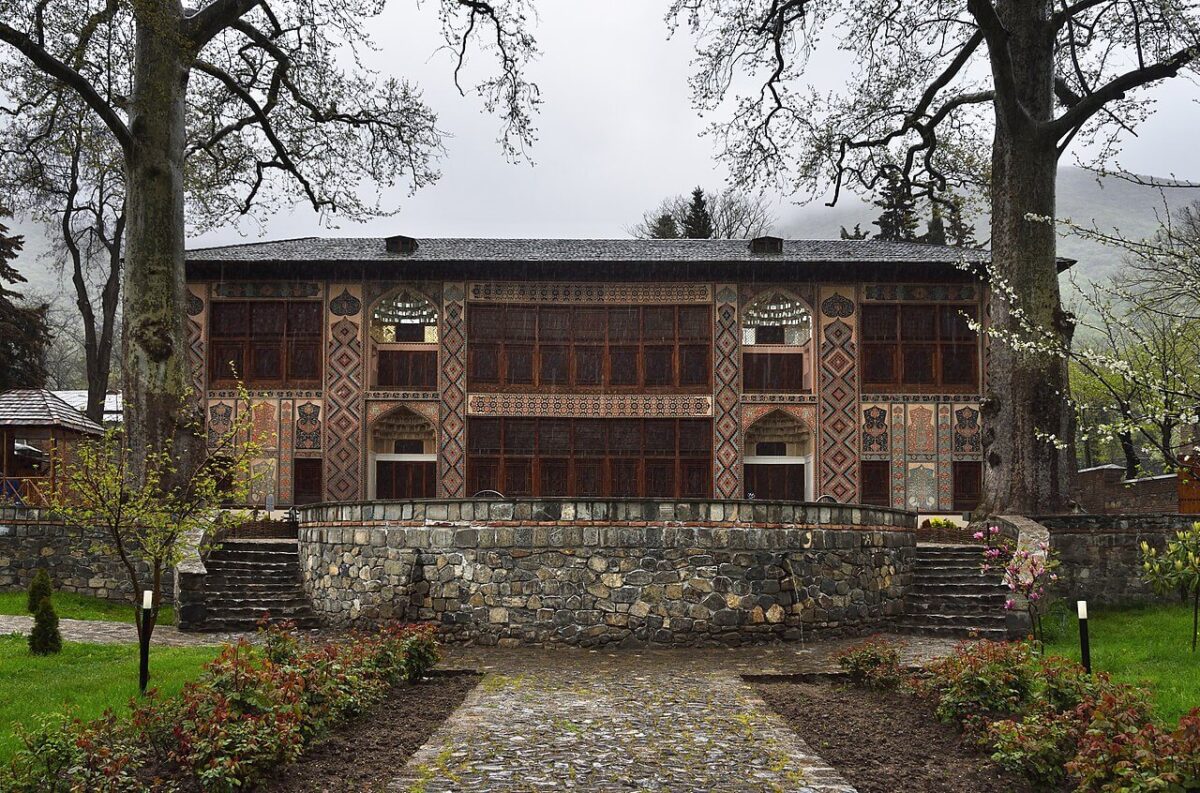
The Palace of Shaki Khans
The Palace of Shaki Khans was a summer residence for the Shaki Khans. The palace was built in the late 18th century in Sheki, on the foothills of the Caucasus Mountains. The palace has lavish interiors and exteriors with stained glass windows, floral tile panels, tile mosaic, and ceilings adorned with floral patterns.
UNESCO Palaces in Croatia
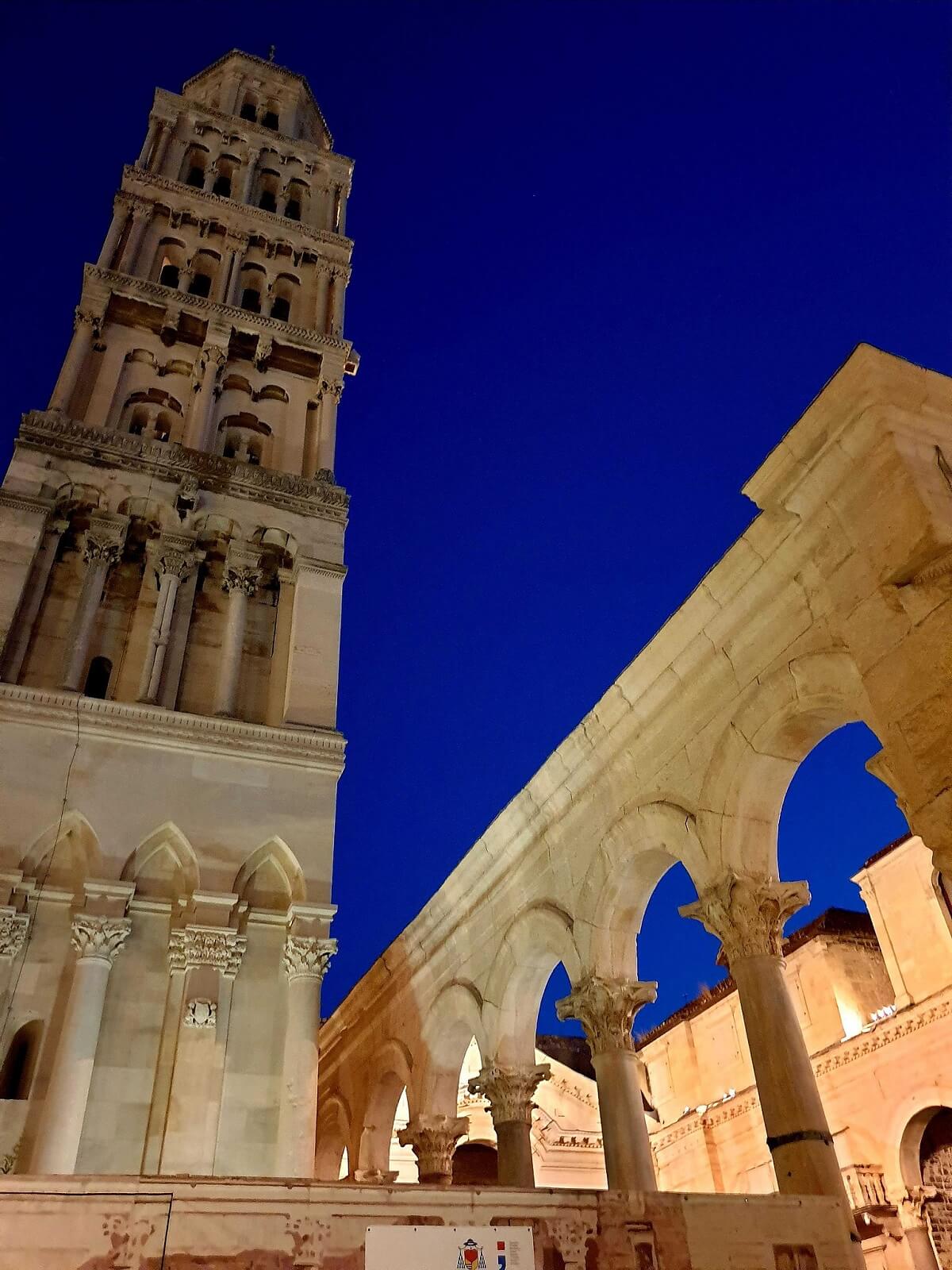
Diocletian’s Palace
The Diocletan’s Palace in Split is one of the most valuable buildings of the Roman era that have survived. The palace was built as an imperial residence, military fortress, and fortified town in the 4th century AD.
This ancient Roman building is not a regular palace that you can visit as a museum. Instead, the remains of this Roman building can be seen while walking around Split in Croatia, and today about 3000 people live on the grounds of the palace.
Palaces in Trogir
Trogir is a historic town and harbor town on the Adriatic coast in Croatia. The city has a diverse history with Greek, Roman, and Venetian influences and it is packed with palaces, churches, and towers. There are several Renaissance and Baroque palaces like the Duke’s Palace which dates back to the 13th century and the big and small palaces Cipiko from the 15th century.
The Garagnin Fanfoga Palace consists of Romanesque and Gothic buildings and houses the town museum.
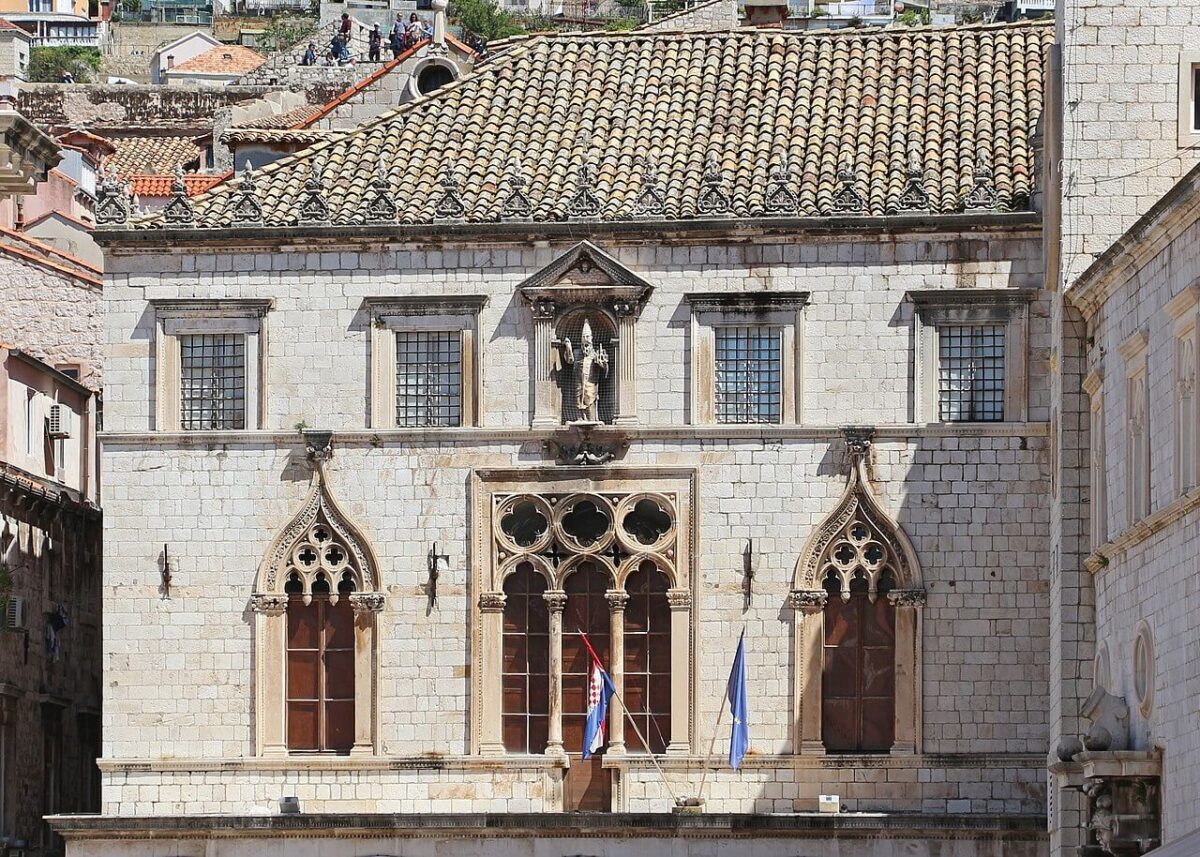
Sponza Palace
The city of Dubrovnik is a UNESCO World Heritage site and in this city you can find the Sponza Palace. The palace was built in the 16th century and features Gothic and Renaissance architecture styles. The palace is now the home of the Dubrovnik State Archive which holds documents that go back to the 11th century.
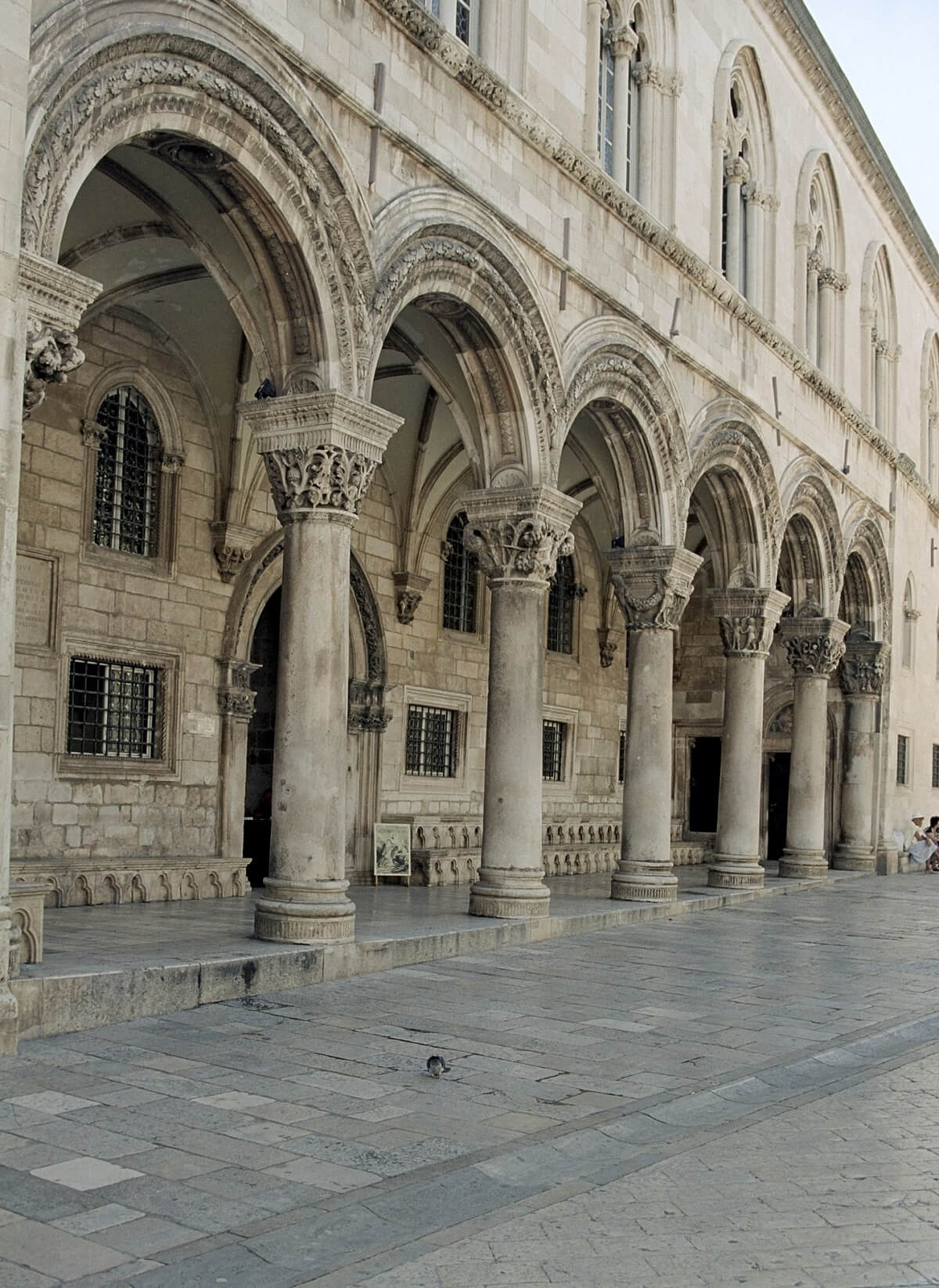
The Rector’s Palace
The Rector’s Palace is a palace in Dubrovnik that was the seat of the Rector of the Republic of Ragusa between the 14th century and 1808. The palace showcases Gothic, Renaissance, and Baroque architecture styles.
Since 1872, the palace houses the History Department of the Museum of Dubrovnik.
UNESCO Palaces in France

Palais des Papes
The Palace of the Popes is a remarkable piece of architectural and historical significance overlooking the Rhône river in Avignon. It is the largest and most important Gothic palace in the world. It covers an area of approximately 11,000 square meters and it was built between 1335 and 1364 during the Avignon Papacy.
The palace served as the residence of the Popes during their exile from Rome and contains a variety of chapels, halls, and chambers, including the Chapel of the Popes and the Great Audience Chamber.
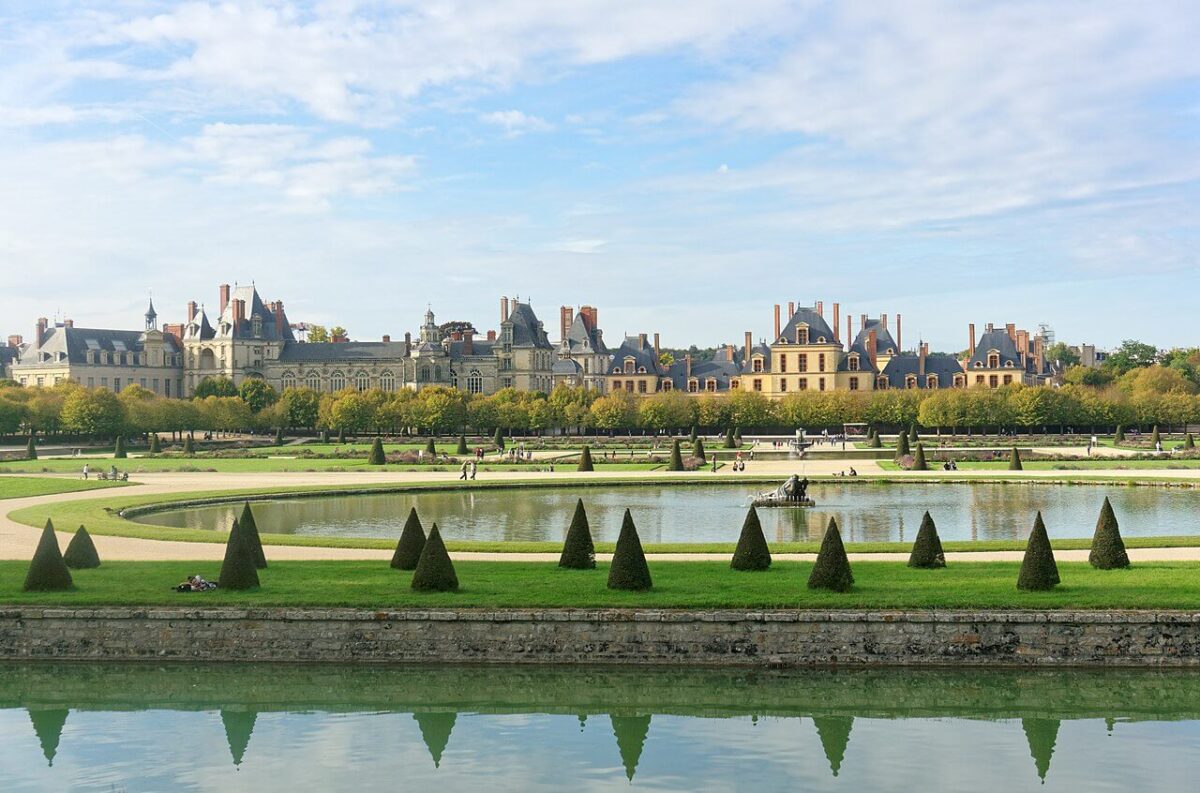
Palace of Fontainebleau
Château de Fontainebleau is a Renaissance and Classical palace south of Paris. From the middle ages to the 19th century, this palace was the residence of the rulers of France. King Francois I created the Italian-style palace in 1528 and after the revolution, it became an imperial palace. The Palace of Fontainebleau houses the only Napoleonic Throne Room that is still in existence.
The palace is home to an important collection of antique furniture. It also preserves a collection of paintings, sculptures, and works of art ranging from the 6th to the 19th century. The 130 hectare estate has three gardens and a park.
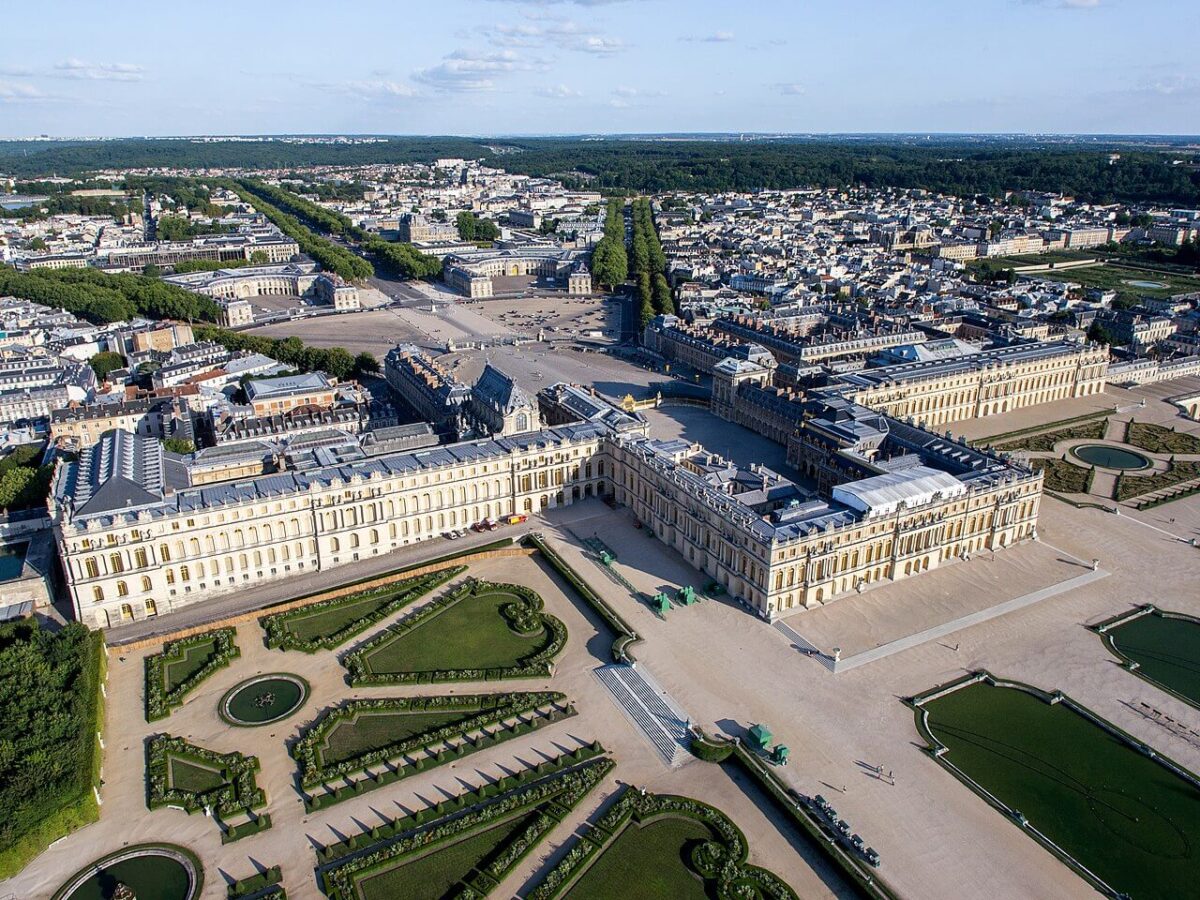
Palace of Versailles
The inspiration for many European palaces in the 18th and 19th century. Château de Versailles is a masterpiece of Classical architecture. The construction of the most famous palace in the world started in the early 17th century and it slowly transformed from a hunting lodge into a seat of power.
The most famous room in the Palace of Versailles is the Hall of Mirrors which pays tribute to the political, economic, and artistic success of France. But the palace has far more to offer, from the grand interiors to the palace park that spreads out over 800 hectares and includes 93 hectares of gardens and the private château of Queen Marie Antoinette.
See also: Visit the Former Royal Palaces in France
UNESCO Palaces in Germany

Sanssouci
On a small rise covered with vineyards near Potsdam stands Sanssouci Palace. The palace was built by King Frederick the Great (King of Prussia) as a summer residence. Sanssouci was the personal sanctuary of the Prussian King. Here, he would come to relax in the company of his dogs.
The palace was built in Rococo style with intimate suites of rooms that still show their original designs and furniture. Until the fall of the Hohenzollern dynasty in 1918, the palace was a favorite place of the German imperial family.
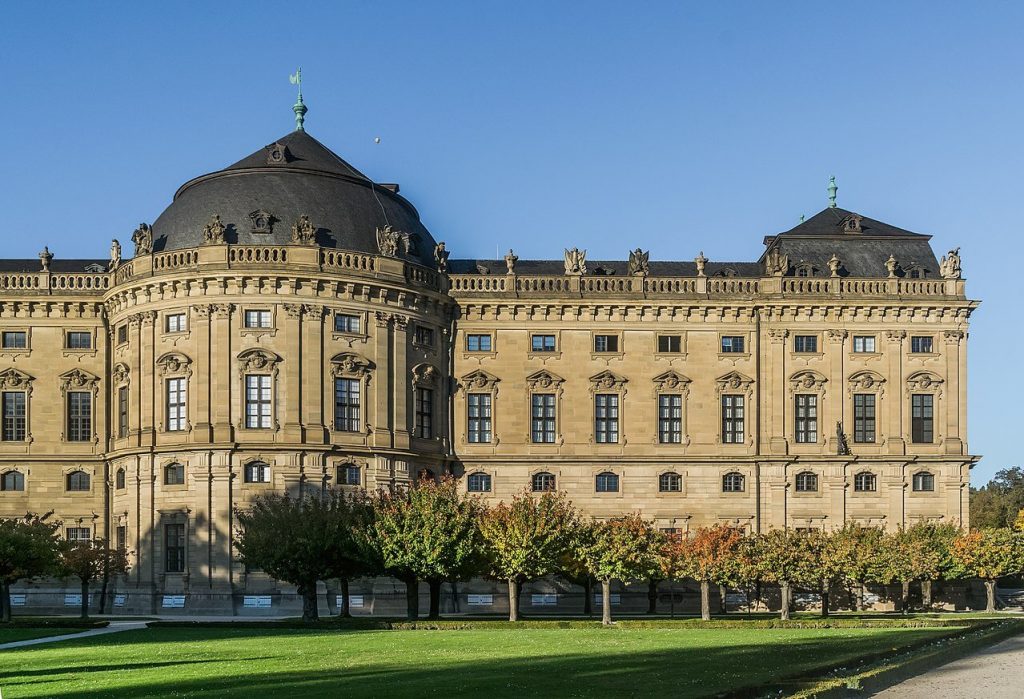
Würzburg Residence
The architect of the Würzburger Residenz was inspired by architecture from all over Europe. And this can be seen at the palace, where you will marvel at architectural styles like the French château style and Viennese Baroque style.
40 period rooms from the Würzburg Residence are open to the public. These beautiful rooms have frescoes by Italian painter Tiepolo and the largest ceiling fresco in the world is located at the Würzburg Residence.
UNESCO Palaces in Italy
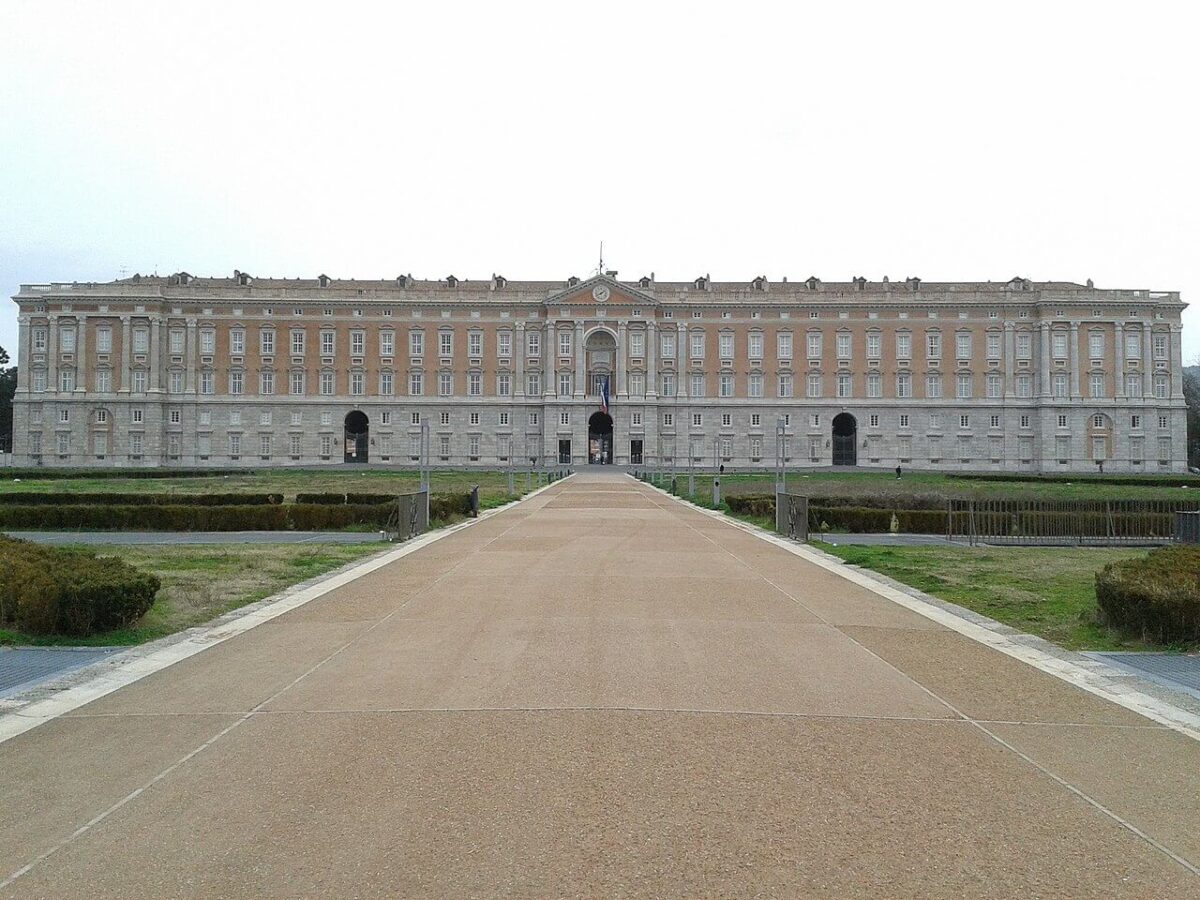
The Royal Palace of Caserta
The Royal Palace of Caserta (Reggia di Caserta) is the largest palace in Europe that was built in the 18th century. The palace was built by Charles VII of Naples to become the main residence of the kings of Naples.
Like many palaces, it was inspired by Versailles in terms of combining a king’s residence, a court, and a government in one building but you can also see similarities in the architecture. The palace shows the grandeur of the Bourbon monarchy and has two dozen state apartments, a large library, and a theatre that is modeled after the Teatro San Carlo in Naples.
The park is also inspired by Versailles. It includes a botanical garden and a long alley with artificial fountains and cascades.
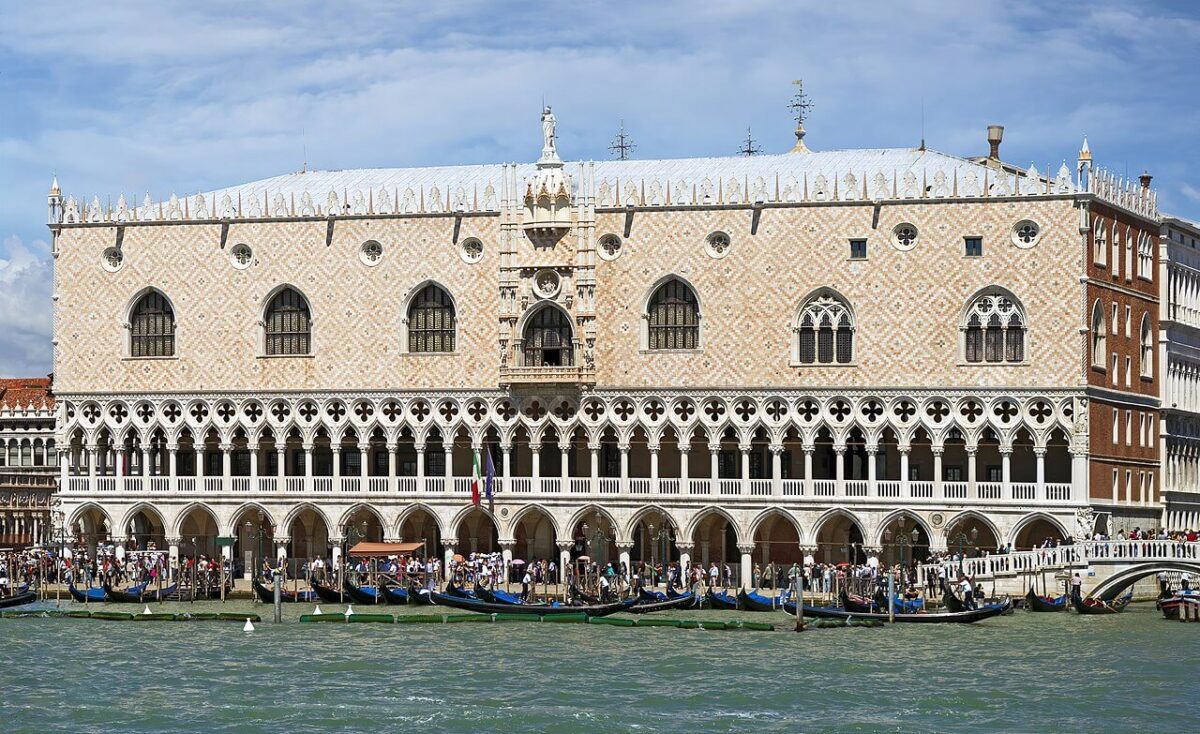
Doge’s Palace Venice
The Doge’s Palace in Venice is a masterful Gothic building. The palace was the residence of the Doge of Venice, the chief magistrate and leader of the Republic of Venice. The start of building of the palace started in 1340 which is now the wing that overlooks the lagoon. In later centuries more wings were added.
The Doge’s Palace is now home to a museum with permanent and temporary exhibitions. The Doge’s Apartments can also be visited.
The Palaces of Genoa
Le Strade Nuove (New Streets) and the Palazzi dei Rolli (Palaces of the Lists) in Genoa are UNESCO World Heritage Sites. This list of 163 palaces showed where notable guests that were on a State visit could be hosted. These private palaces and mansion houses belonged to the best Genoese families. 42 of these palaces are now UNESCO World Heritage Sites. They are now used as public buildings, museums, offices, and private residences. Some of these Genoese palaces are open to visitors.
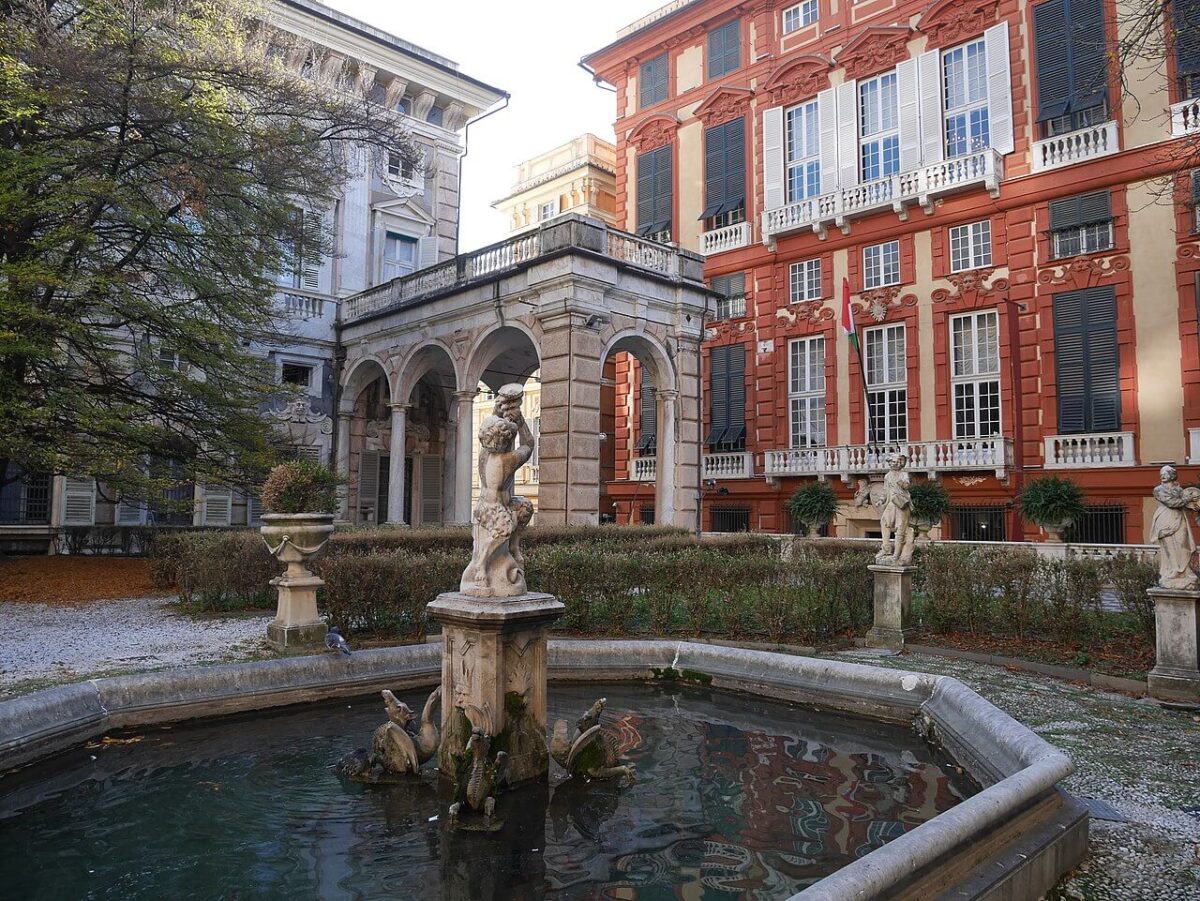
Musie di Strada Nuova
Three palaces are now home to the Musei di Strada Nuova. In Palazzo Rosso you can see paintings from the 15th–20th century. At Palazzo Bianco you can see art that is produced in Genoa and Liguaria. And in Palazzo Tursi you can see Antonio Canova’s Penitent Magdalene and the ceramic, numismatic and Paganini collections.

The Royal Palace of Genoa
Palazzo Reale is one of the largest 17th century architectural buildings in Genoa. The palace was built for the Balbi family in 1618 and later it was enlarged by the Durazzo family. Since 1823, the palace belonged to the Royal House of Savoy.
The lavish rooms are decorated with frescoes, stuccos, paintings, sculptures, furniture, and fittings that once belonged to noble and royal families.
Palazzo Spinola di Pellicceria
This palace was built in the late 16th century for the Grimaldi family who would own the palace until the mid 17th century. In the 18th century, it would become the private residence of the House of Spinola. The palace houses a large collection of furniture, art, silverware, ceramics, and books. It is now the home of the National Gallery of Palazzo Spinola.
Residences of the House of Savoy
The House of Savoy is an ancient royal family that was founded in France and from 1720 it reigned over the Kingdom of Sardinia in norther Italy. The residences of the House of Savoy in Italy are UNESCO World Heritage Sites.
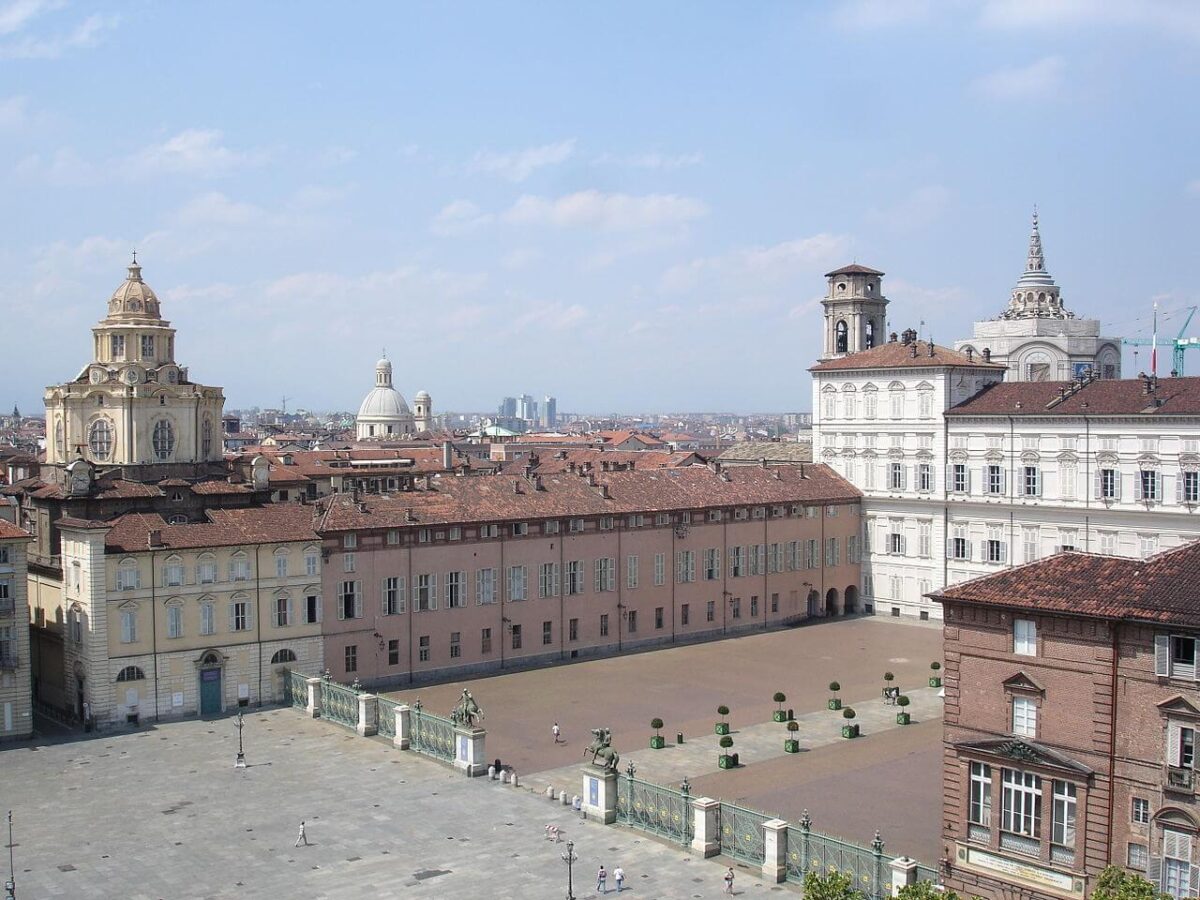
Royal Palace of Turin
Palazzo Reale di Torini is a palace in Turin that was originally built in the 16th century but was later modernized in Baroque style by Christine Marie of France (the sister of King Louis XIII and Duchess of Savoy).
The lavish palace is now home to a museum. You can visit the former royal apartments of the House of Savoy, the Royal Armory, the Chapel of the Shroud, the Savoy Gallery, the Museum of Antiquities, the Royal Gardens, and the Royal Library.

Palace of Venaria
Reggia di Venaria Reale is a palace that was built in 1675 by Duke Charles Emmanuel II as a hunting palace. Eventually it was enlarged to become a luxurious Baroque palace of the House of Savoy filled with stunning artworks and decoration.

Palazzina di Caccia of Stupinigi
The palace was built in the early 18th century as a royal hunting lodge a few kilometers south of Turin. The palace was designed by Filippo Juvarra for Victor Amadeus II, King of Sardinia. Multiple times, this palace was used as a wedding venue for the Savoy family.
The palace is now home to the Musei di Arte e Ammobillamento, a museum filled with art and furniture, including the most important collection of Piedmontese furniture.
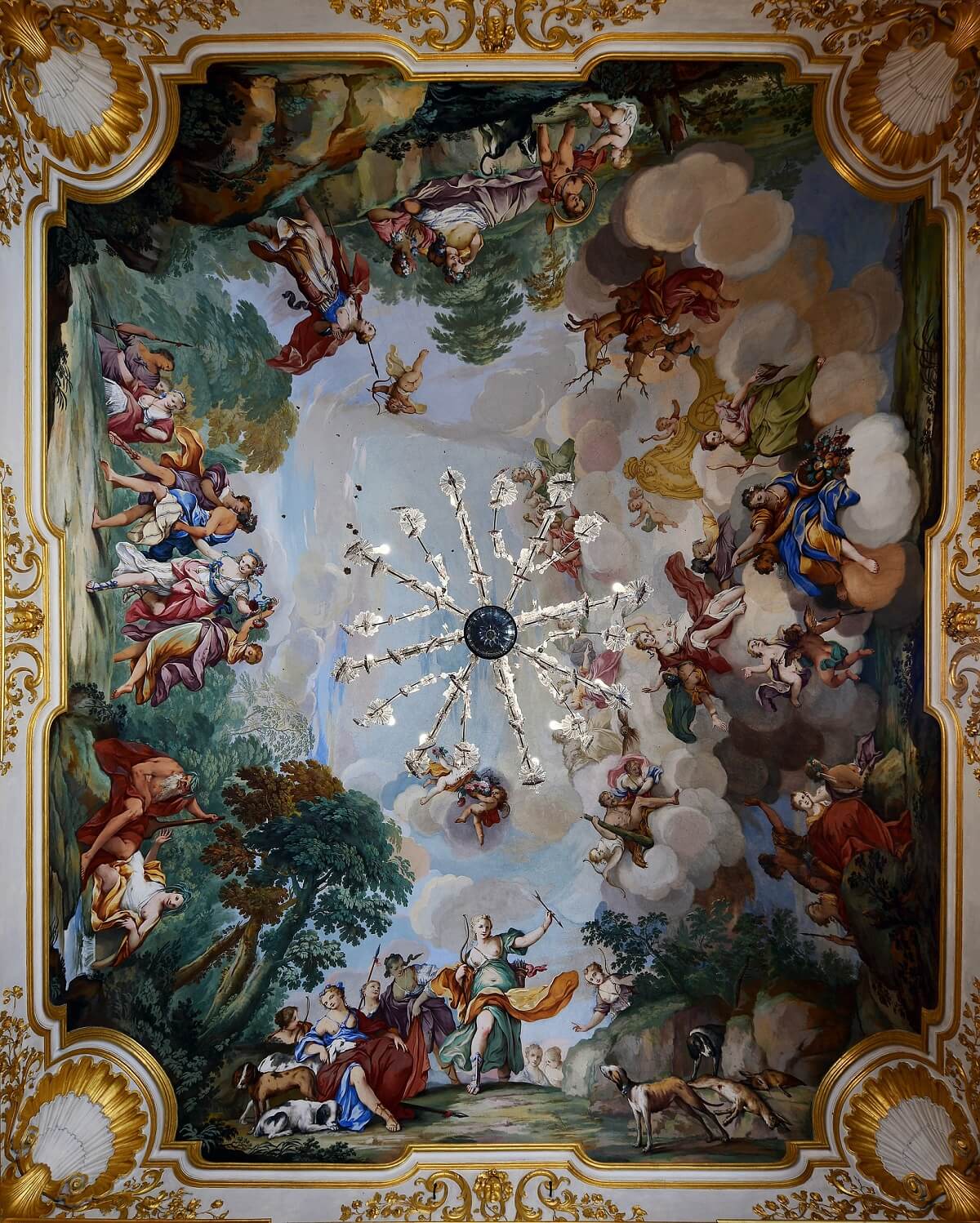
photo: Paris Orlando / CC BY-SA 4.0
Palazzo Carignano
Palazzo Carignano is a 17th century palace in the center of Turin which was the private residence of the Princes of Carignano. The Baroque palace was the birthplace of several noble figures like Marie-Louise, princesse de Lamballe who was a confidant of Queen Marie Antoinette, and Victor Emmanuel II, the first King of Italy. The palace now houses the Museum of the Risorgimento.
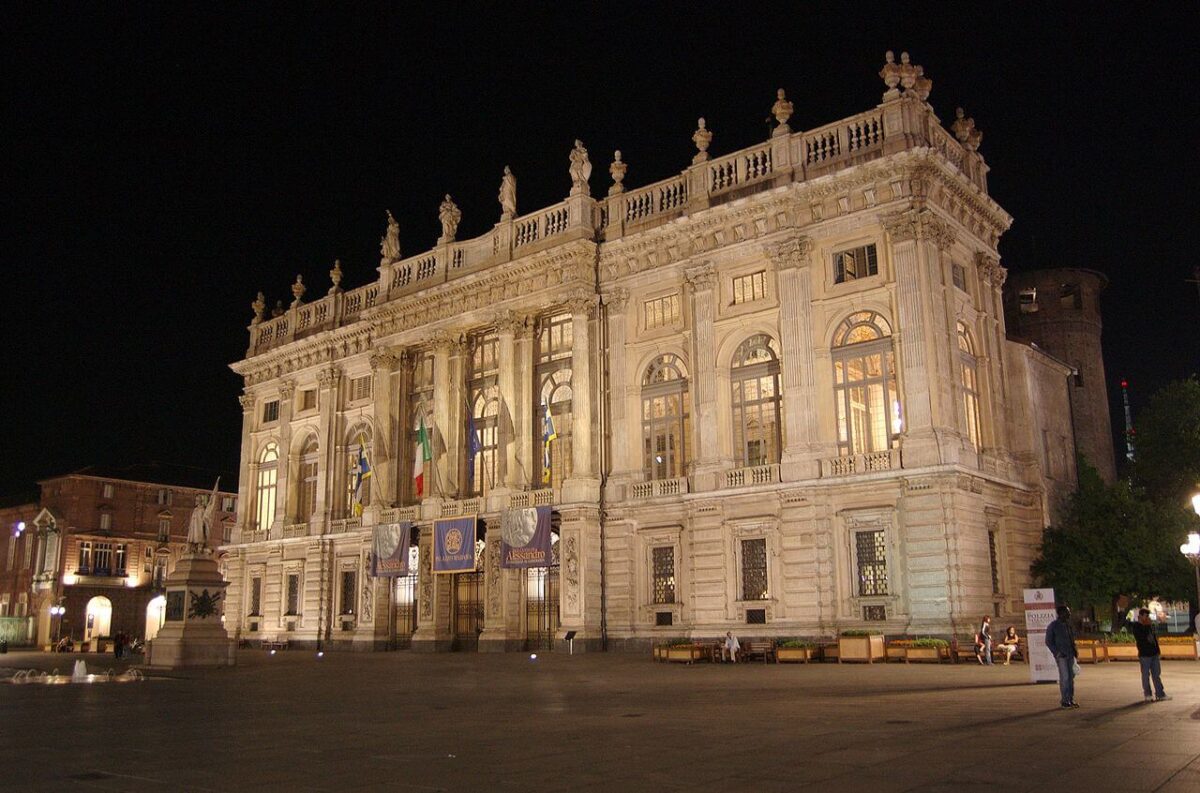
Palazzo Madama
In 1637, Christine of France chose Palazzo Madama in Turin as her personal residence. And later, Marie Jeanne of Savoy invited artists to transform the building into a lavish palace, artist Domenico Guidobono created many artworks in the palace. Marie Jeanna also extended the building in Baroque style.
The palace now houses the Turin City Museum of Ancient Art. It shows a collection of paintings, statues, church ornaments, porcelain, and decorative art from the Middle Ages to the 18th century.
UNESCO Palaces in Portugal
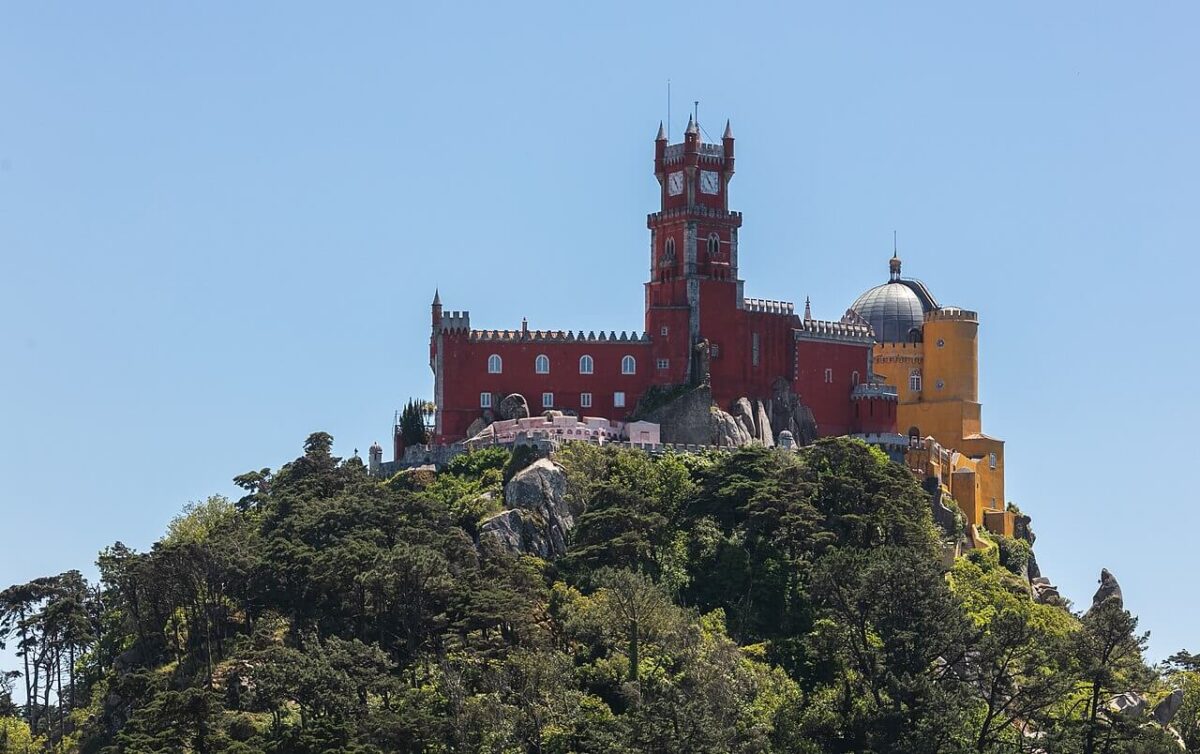
Pena Palace
Palácio da Pena is one of the Seven Wonders of Portugal. The palace if located on a hill in the Sintra Mountains overlooking the town. The history of the palace starts in medieval times when a chapel was built on top of the hill. It was a favorite destination for King John II and Queen Leonor as well as King Manuel I.
In the 18th century, lightning and an earthquake severely damaged the monastery, though the chapel survived. It was King consort Ferdinand II who decided in 1838 to transform the ruins into a palace that would become the summer residence of the Portuguese royal family.
Inspiration for the palace was the romantic castles along the Rhine river in Germany. But King Ferdinand and Queen Maria II also wanted medieval and Islamic elements to be included in the design of the palace. This resulted in a colorful palace that shows a mixture of architectural styles that would draw visitors from all over the world.

The Palace of Sintra (Sintra National Palace)
Palácio Nacional de Sintra is the best preserved medieval royal residence in Portugal. The Town Palace is located in the city of Sintra, near Lisbon. The palace was the residence of the Islamic Moorish Taifa of Lisbon rulers and it was first mentioned in the 8th century.
The palace you see today is a result of many royal palaces. At the end of the Middle Ages, the Palace of Sintra was the heart of royal life as Sintra was a favorite destination for the rulers of Portugal to hunt and to take refuge. A visit to the Palace of Sintra will take you through the (royal) history of Portugal.

The Palace of Mafra
Palácio de Mafra is a Baroque and Neoclassical palace/monastery in Mafra, close to Lisbon. The palace was built in the early 18th century by King John V of Portugal after he vowed to his wife, Queen Mariana, that he would build a convent if she gave him children.
The 40,000 square-meter building is one of the largest royal palaces. The palace has two turrets, the north turret was for the king, and the south turret was for the queen. These two turrets are connected by a 232-meter gallery, the largest palatial corridor in Europe. The palace also houses a library with 30,000 rare books.
The Palace of Mafra and the Royal Convent is one of the most important Baroque buildings in Portugal.
UNESCO Palaces in Spain
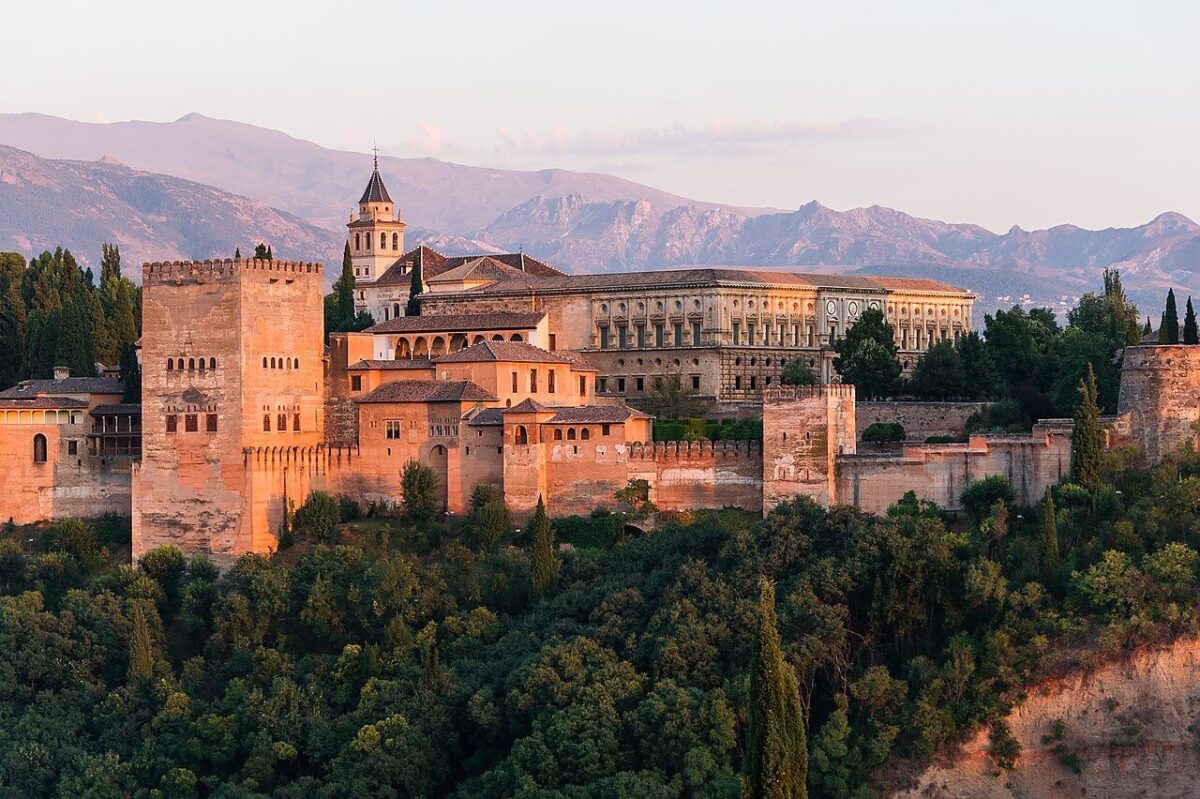
Alhambra
The Palace and Fortress Alhambra in Granada is one of the best-preserved palaces of this historic Islamic world. Its Islamic architecture is world-famous and this is combined with Spanish Renaissance elements. No wonder the palace is a UNESCO World Heritage Site.
The building of the palace started in 1238 by Muhammed I Ibn al-Ahmar (the first Nasrid emir and founder of the Emirate of Granada). After the Christian Reconquista, it became part of the Royal Court. At Alhambra, Christopher Columbus received royal endorsement for his expedition.
In the 19th-century the palace gained renewed popularity among American and European travelers. Washington Irving wrote “Tales of the Alhambra” about the palace.
UNESCO Palaces in Sweden
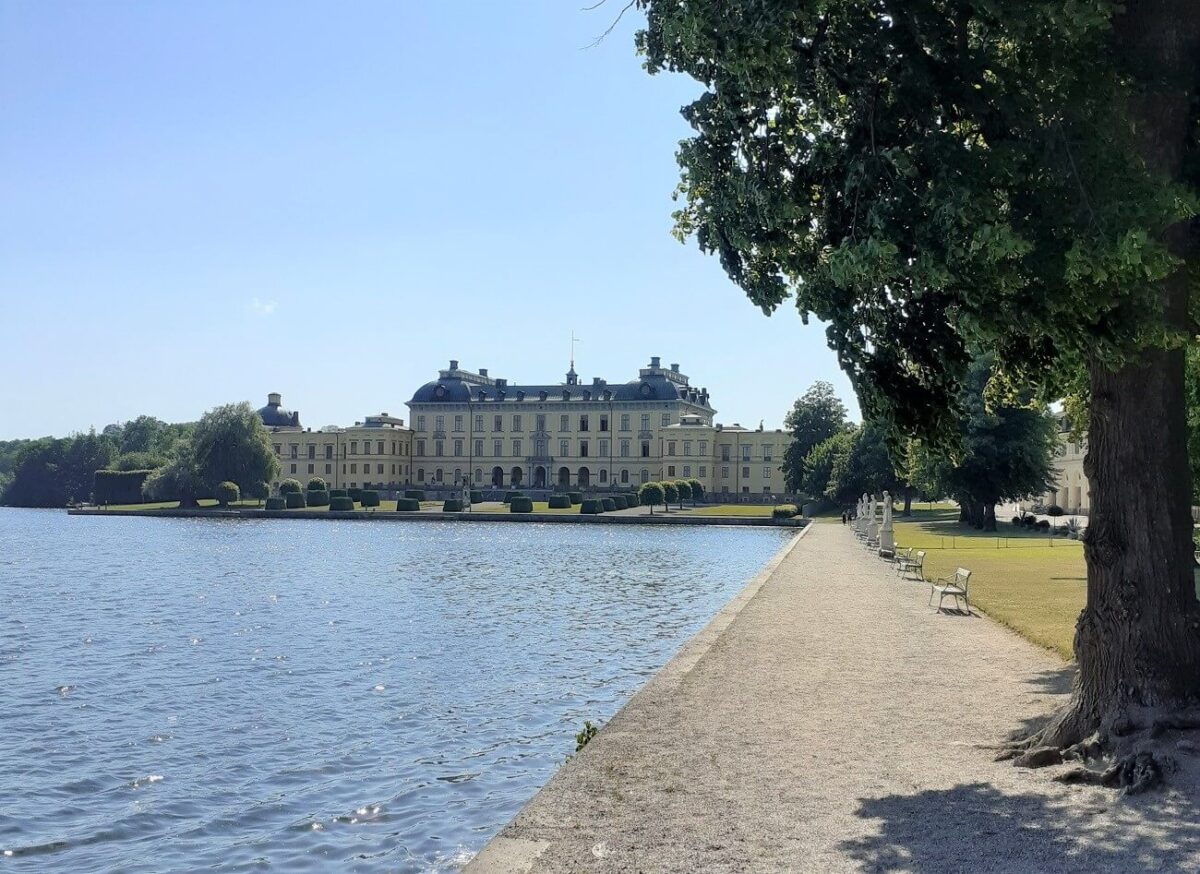
Drottningholm
Drottningholm Palace is the private residence of the Swedish Royal family which is located just outside Stockholm. The palace is the best preserved royal castle that was built in the 1600s in Sweden. As many palaces, Drottningholm was inspired by the Palace of Versailles though it certainly isn’t so grand as the French palace.
The grounds at Drottningholm include a palace church, the palace theatre (which is still in use), and a Chinese pavilion. There are also a Baroque and English landscape garden.
UNESCO Palaces in the United Kingdom

Blenheim Palace
Blenheim Palace is the only non-royal, non-episcopal country house in England that holds the title “palace”. The 18th century palace is one of the largest stately homes in England and also the birthplace of Winston Churchill.
The Baroque-style stately home was the family home of the Churchill family (and Churchill-Spencer family) for 300 years. The estate almost fell into ruin in the 19th century, but it was saved when the 9th Duke of Marlborough married American heiress Consuelo Vanderbilt

Palace of Holyrood
The Palace of Holyrood in Edinburgh is the official residence of the British monarch in Scotland. The palace is located at the end of the famous Royal Mile and it has been a residence of many Scottish and British monarchs such as Mary, Queen of Scots and Bonnie Prince Charlie. At the palace, you can learn more about the interesting royal history of the palace and how the palace is used today by the British monarch.
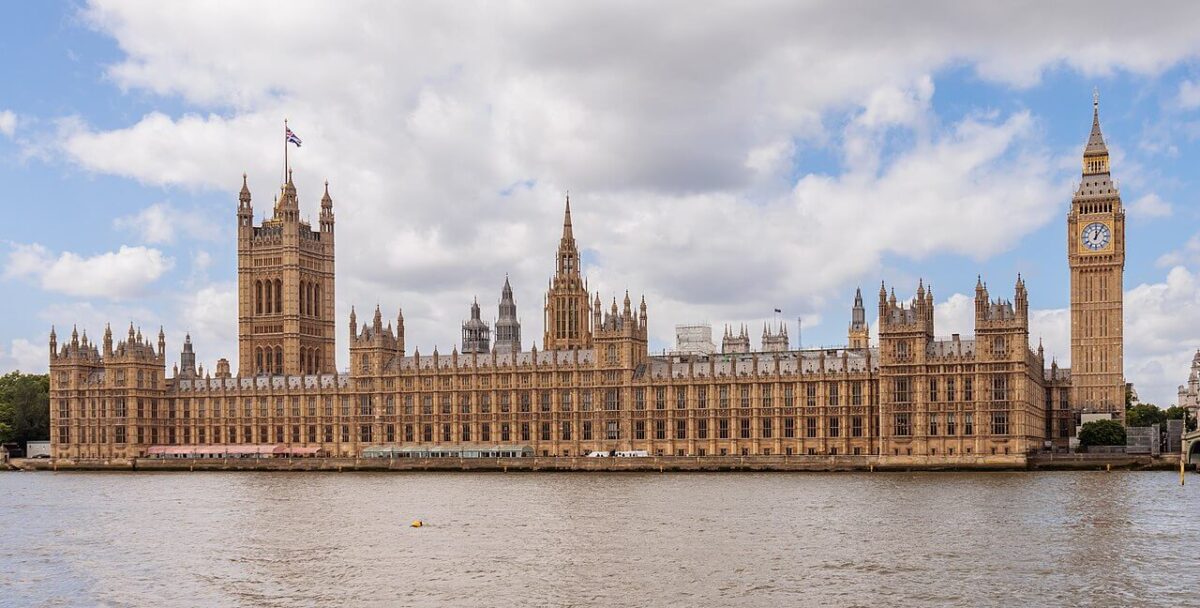
Palace of Westminster
The Palace of Westminster is now the center of political life in the United Kingdom but it was originally a principal residence of the English monarchs. The Medieval Old Palace was built in the 11th century, a fire in 1512 destroyed the royal apartments after which it was used as the home of Parliament. The remainder of the Old Palace burnt down in 1834.
Architect Charles Barry designed the New Palace in the Gothic Revival style. According to UNESCO, the palace, Westminster Abbey, and St. Margaret’s Church have symbolized monarchy, religion, and power since Edward the Confessor built his palace and church on Thorney Island in the 11th century AD. The iconic silhouette of the ensemble is an intrinsic part of its identity, which is recognised internationally with the sound of “Big Ben” being broadcast regularly around the world.
Even though The Palace of Westminster is still used as the home of parliament, they do offer tours of the building so you can see inside this impressive Gothic Revival building along the Thames.
FAQ
The cultural and natural sites that are considered World Heritage Sites are considered to be of “Outstanding Universal Value”. The landmark or area designated by UNESCO have a cultural, historical, scientific, or other form of significance for the people and the world.
A palace is a grand residence that is often used by royal families, heads of state, or high ranking officials like archbishops. A palace is not a castle as it is not fortified and doesn’t look like a fortifications. You can often find palaces in city centers instead of on strategic locations like a castle.
No, not all palaces are considered a UNESCO World Heritage Site.
